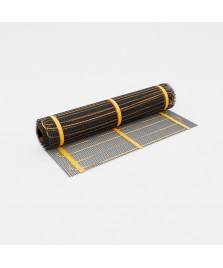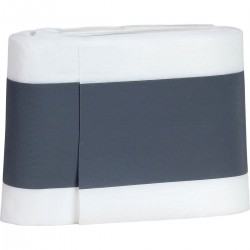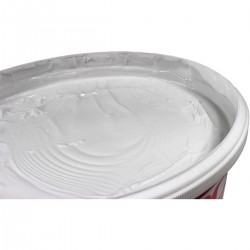- today
- label Wet Room Kits
- favorite 0 likes
- remove_red_eye 3852 views

When designing your wetroom, understanding splash zones or splash areas is crucial for safety and functionality. This comprehensive guide will reveal everything you need to know about wetroom splash zones. We'll explore how they impact electrical safety, layout, and design choices.
What Are Wetroom Splash Zones?
Wetroom splash zones are areas within a bathroom that are likely to get wet from the shower or bath. These zones are crucial for determining where waterproofing and electrical appliances are needed. Splash zones are similar to electrical zones, categorised by proximity to water sources and the likelihood of water contact.
Types of Splash Zones in a Wetroom
In a wetroom, there are typically three main splash zones:
-
Zone 0: This is the area inside the shower tray or bath where water pooling is most likely to occur.
-
Zone 1: This covers the area directly above Zone 0. It extends to a height of 2.25m from the finished floor level.
-
Zone 2: This area extends 600mm beyond Zone 1 and to a height of 2.25m from the floor. In areas without a shower tray, Zone 2 is replaced by Zone 1, which extends 1.2m around the showerhead.
Why Are Splash Zones Important?
Understanding splash zones is crucial for several reasons:
Waterproofing
Knowing where water is likely to splash helps determine which areas must be fully waterproofed to prevent leaks and water damage. This is particularly important in Zone 0 and Zone 1. Here, water exposure is frequent and can lead to structural issues if not properly addressed.
Electrical Safety
Splash zones dictate where electrical appliances and fittings can be safely installed to avoid the risk of electric shock. This is critical for preventing accidents and ensuring compliance with safety regulations.
Material Selection
Different zones need different materials based on their water-resistance properties. For instance, tiles used in Zone 0 may need to be more water-resistant and slip-proof than those used in Zone 2 or beyond.
Drainage Planning
Proper drainage system placement is essential to manage water flow effectively in wet areas. Understanding splash zones helps in positioning drains optimally to prevent water pooling. It will also ensure efficient water removal, particularly in high-flow areas like directly beneath the showerhead.
How Do Splash Areas Affect Electrical Safety in Wet Rooms?
Electrical safety is paramount in wetrooms due to the presence of water. The IEE Wiring Regulations provide guidelines for installing electrical equipment in the different zones:
Zone 0
Only SELV (Safety Extra Low Voltage) electrical items with a maximum of 12 volts are permitted. These must be IPX7-rated for immersion protection.
Zone 1
Electrical appliances in this area must be IPX4-rated for splash protection. Examples include shower pumps and extractor fans.
Zone 2
Most electrical equipment is permitted in this zone, provided it's IPX4-rated (or IPX5, where water jets are likely).
Beyond Zone 2
Installing electrical equipment beyond Zone 2 is permitted without an IP number. However, it's still advisable to use appliances with some level of moisture protection in a damp environment.
Understanding IP Ratings in Wetroom Shower Areas
IP (Ingress Protection) ratings indicate the level of protection an electrical fitting or appliance has against moisture or breakage. The higher the number, the better the protection. For example:
-
IPX4: Protected against water splashes from any direction
-
IPX5: Protected against low-pressure water jets
-
IPX7: Protected against temporary immersion in water
Understanding these ratings is crucial when selecting electrical items for your wetroom.
How Splash Zones Influence Wetroom Design Choices
Splash zones significantly impact wetroom aesthetics and functionality beyond basic safety considerations. They influence the following:
Spatial Planning
Understanding splash zones helps in optimising room layout while maintaining a stylish design. For example, positioning towel rails or storage units in drier areas can enhance convenience and longevity.
Shower Screens
While not essential in wetrooms, many people prefer a shower enclosure, like a glass panel, to contain water within the shower area. The placement of a glass screen can help define splash zones.
Lighting Choices
Splash zones affect the placement of lighting fixtures. Water-resistant LED strips can be used in Zone 1 to create ambient lighting. More decorative fixtures are better suited for Zone 2 and beyond.
Ventilation
Consider splash zones for the proper placement of extractor fans. This ensures they effectively manage humidity levels and prevent mould growth.
Accessibility Features
For those with mobility issues, splash zones guide the placement of grab bars, shower seats, and non-slip surfaces. Making the right choices ensures safety without compromising on design.
Colour Schemes
Understanding water distribution can even inform colour choices. Darker tones can be used in high-splash areas to mask watermarks. In contrast, lighter colours used in drier zones create a sense of spaciousness.
Create the Perfect Wetroom With Wetroomstop
Wetroom splash zones are a crucial consideration in wetroom design. By understanding these zones and their implications, you can create a safe and functional wetroom.
At Wetroomstop, we offer a wide range of products to help you manage splash zones effectively. Our selection includes high-quality linear shower drains for efficient water management. Our wetroom shower trays are specifically designed to create a seamless, waterproof shower area. We also stock a variety of tanking materials, including sealing tapes and compounds.
For more information on creating your ideal wetroom, don't hesitate to contact our expert team. We'll gladly assist you in choosing the right products for your splash zones.















